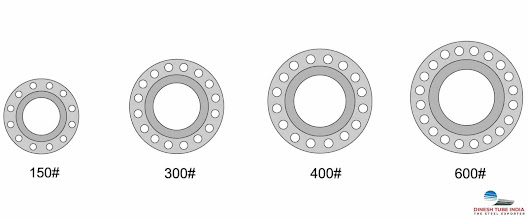What is the difference between forged stainless steel and stainless steel?
The appearance, strength, and
other properties of forged steel differ from those of stainless steel. In
contrast to stainless steel, which is usually cast and polished, forged steel
is rougher, and has a different molecular and grain makeup.
The term ‘stainless’ was coined in the early
days for steel used in cutlery. Steels that resist corrosion or oxidation are
referred to as corrosion-resistant steels, which encompass a broad range of
grades and types.
The chromium content of stainless steel must
be at least 10.5%. The steels also have properties such as cryogenic toughness
and formability enhanced by adding other alloying elements.
Application environments and applications that
require corrosion-resistant materials commonly use stainless steel. First and
foremost, corrosion resistance must be considered when choosing stainless steel
grades. The requirements for service performance may include additional
mechanical or physical properties. Forging, casting, and machining are among the
metalworking processes that use stainless steel. In this section, we’ll examine
closed die forging in detail by using stainless steel as an example.
What is forged steel?
Under extreme pressure, forged steel is
fashioned from carbon and iron alloys to create a very hard, strong material.
All types of materials have been created using it for thousands of years. A
hydraulic hammer or specialized machine is used to forge steel today.
Understanding the benefits of forged steel requires taking many factors into
consideration.
Forged steel can be classified into three
types. As the alloy is drawn out, its length increases and its width decreases.
Setup steel has a length decrease and a width increase, the opposite of flat
steel. The compression of squeezed-in steel is achieved by using closed dies
that produce flow in all directions.
There are many industries that use forged
steel. Various industries rely on forged steel, including manufacturing and
pharmaceuticals. Generally, forged steel can enhance the strength and
weight-consciousness of anything made from metal.
Forged steel and Stainless steel
differences
Stainless steel is anti-corrosive and
attractive in appearance due to its manufacturing process, which makes forged
steel stronger. In building or manufacturing, you should be aware of these
differences before you choose a process.
Forged Steel
Metal items that are forged are hammered into
place or forced into place through force. It strengthens steel by aligning its
grain in one direction through this apparently abusive process. When stress is
applied to forged steel, it is less susceptible to deformation and shattering
than cast stainless steel. Another alternative is to machine forged pieces from
solid blocks or casts, retaining much of their solidity.
A forged product has a uniform composition and
structure. The thermal cycle and deformation process of forging result in
metallurgical recrystallization and grain refinement. Resulting steel products
are strengthened, particularly under impact and shear. Since the grain flows of
forged steel are altered, conforming to the shape of the part, it is generally
stronger and more reliable than castings and plate steel.
Read More About This Article
On Our Website For More information: https://thesteelexporter.com/what-is-the-difference-between-forged-stainless-steel-and-stainless-steel/
#design #architecture #interiordesign #steel #art #garden #gardendesign #rust #gardening #sculpture #metal #welding




Comments
Post a Comment